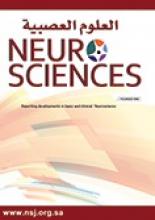Research ArticleOriginal Article
Open Access
COMTVal158Met polymorphism is associated with ecstasy (MDMA)-induced psychotic symptoms in the Turkish population
Hasan Mervan Aytac, Yasemin Oyaci, Pinar Cetinay Aydin, Mustafa Pehlivan and Sacide Pehlivan
Neurosciences Journal January 2022, 27 (1) 24-30; DOI: https://doi.org/10.17712/nsj.2022.1.20210045
Hasan Mervan Aytac
From the Department of Psychiatry (Aytac), Basaksehir Cam and Sakura City Hospital; Department of Medical Biology (Oyaci, Pehlivan), Istanbul Faculty of Medicine, Istanbul University, and from the Department of Psychiatry (Cetinay Aydin), Bakirkoy Research and Training Hospital for Psychiatry, Neurology and Neurosurgery, Psychiatry Clinic, University of Health Sciences, Istanbul, and from the Department of Hematology (Pehlivan), Gaziantep University, Faculty of Medicine, Gaziantep, Turkey
MDYasemin Oyaci
From the Department of Psychiatry (Aytac), Basaksehir Cam and Sakura City Hospital; Department of Medical Biology (Oyaci, Pehlivan), Istanbul Faculty of Medicine, Istanbul University, and from the Department of Psychiatry (Cetinay Aydin), Bakirkoy Research and Training Hospital for Psychiatry, Neurology and Neurosurgery, Psychiatry Clinic, University of Health Sciences, Istanbul, and from the Department of Hematology (Pehlivan), Gaziantep University, Faculty of Medicine, Gaziantep, Turkey
MScPinar Cetinay Aydin
From the Department of Psychiatry (Aytac), Basaksehir Cam and Sakura City Hospital; Department of Medical Biology (Oyaci, Pehlivan), Istanbul Faculty of Medicine, Istanbul University, and from the Department of Psychiatry (Cetinay Aydin), Bakirkoy Research and Training Hospital for Psychiatry, Neurology and Neurosurgery, Psychiatry Clinic, University of Health Sciences, Istanbul, and from the Department of Hematology (Pehlivan), Gaziantep University, Faculty of Medicine, Gaziantep, Turkey
MDMustafa Pehlivan
From the Department of Psychiatry (Aytac), Basaksehir Cam and Sakura City Hospital; Department of Medical Biology (Oyaci, Pehlivan), Istanbul Faculty of Medicine, Istanbul University, and from the Department of Psychiatry (Cetinay Aydin), Bakirkoy Research and Training Hospital for Psychiatry, Neurology and Neurosurgery, Psychiatry Clinic, University of Health Sciences, Istanbul, and from the Department of Hematology (Pehlivan), Gaziantep University, Faculty of Medicine, Gaziantep, Turkey
MDSacide Pehlivan
From the Department of Psychiatry (Aytac), Basaksehir Cam and Sakura City Hospital; Department of Medical Biology (Oyaci, Pehlivan), Istanbul Faculty of Medicine, Istanbul University, and from the Department of Psychiatry (Cetinay Aydin), Bakirkoy Research and Training Hospital for Psychiatry, Neurology and Neurosurgery, Psychiatry Clinic, University of Health Sciences, Istanbul, and from the Department of Hematology (Pehlivan), Gaziantep University, Faculty of Medicine, Gaziantep, Turkey
PhD
References
- 1.↵
- Karlsen SN,
- Spigset O,
- Slørdal L
- 2.↵
- Han DD,
- Gu HH
- 3.↵
- Quinton MS,
- Yamamoto BK
- 4.↵
- Virani S,
- Daya GN,
- Brainch N,
- Kotapati VP,
- Zaveri D,
- Ahmed S
- 5.↵
- 6.↵
- Chen J,
- Lipska BK,
- Halim N,
- Ma QD,
- Matsumoto M,
- Melhem S, et al.
- 7.↵
- Lachman HM
- 8.↵
- Hosák L
- 9.
- Oyaci Y,
- Aytac HM,
- Pasin O,
- Cetinay Aydin P,
- Pehlivan S
- 10.↵
- Pehlivan S,
- Aydin PÇ,
- Aytaç HM,
- Uysal MA,
- Sever Ü,
- Pehlivan M
- 11.↵
- Kirov G,
- Murphy K,
- Arranz M,
- Jones I,
- McCandles F,
- Kunugi H, et al.
- 12.↵
- Strous RD,
- Nolan KA,
- Lapidus R,
- Diaz L,
- Saito T,
- Lachman HM
- 13.↵
- Pehlivan S,
- Aytac HM,
- Kurnaz S,
- Pehlivan M,
- Cetinay Aydin P
- 14.
- Tammimäki AE,
- Männistö PT
- 15.↵
- 16.↵
- Association WM
- 17.↵
- 18.↵
- Lee W-C,
- Wang L-Y
- 19.↵
- Lohoff FW,
- Weller AE,
- Bloch PJ,
- Nall AH,
- Ferraro TN,
- Kampman KM, et al.
- 20.↵
- Mizuno Y,
- Jung M,
- Fujisawa TX,
- Takiguchi S,
- Shimada K,
- Saito DN, et al.
- 21.↵
- Hosák L
- 22.↵
- 23.↵
- 24.↵
- Li T,
- Chen Ck,
- Hu X,
- Ball D,
- Lin SK,
- Chen W, et al.
- 25.↵
- Taylor S
- 26.↵
- 27.↵
- 28.↵
- Suzuki A,
- Nakamura K,
- Sekine Y,
- Minabe Y,
- Takei N,
- Suzuki K, et al.
- 29.↵
- Egan MF,
- Goldberg TE,
- Kolachana BS,
- Callicott JH,
- Mazzanti CM,
- Straub RE, et al.
- 30.↵
- Mattay VS,
- Goldberg TE,
- Fera F,
- Hariri AR,
- Tessitore A,
- Egan MF, et al.
- 31.↵
- 32.↵
- McKetin R,
- McLaren J,
- Lubman DI,
- Hides L
- 33.↵
- Curran C,
- Byrappa N,
- McBride A
- 34.↵
- Virani S,
- Daya GN,
- Brainch N,
- Kotapati VP,
- Zaveri D,
- Ahmed S
- 35.↵
- Duman B,
- Sedes N,
- Baskak B
- 36.↵
- 37.↵
- Zumárraga M,
- Arrúe A,
- Basterreche N,
- Macías I,
- Catalán A,
- Madrazo A, et al.
- 38.↵
- Meyer-Lindenberg A,
- Kohn PD,
- Kolachana B,
- Kippenhan S,
- McInerney-Leo A,
- Nussbaum R, et al.
- 39.↵
- Tunbridge EM,
- Harrison PJ,
- Weinberger DR
- 40.↵
- Gouzoulis-Mayfrank E,
- Daumann J
- 41.↵
- Kanthasamy A,
- Sprague J,
- Shotwell J,
- Nichols D
In this issue
COMTVal158Met polymorphism is associated with ecstasy (MDMA)-induced psychotic symptoms in the Turkish population
Hasan Mervan Aytac, Yasemin Oyaci, Pinar Cetinay Aydin, Mustafa Pehlivan, Sacide Pehlivan
Neurosciences Journal Jan 2022, 27 (1) 24-30; DOI: 10.17712/nsj.2022.1.20210045
Jump to section
Related Articles
- No related articles found.
Cited By...
- No citing articles found.





